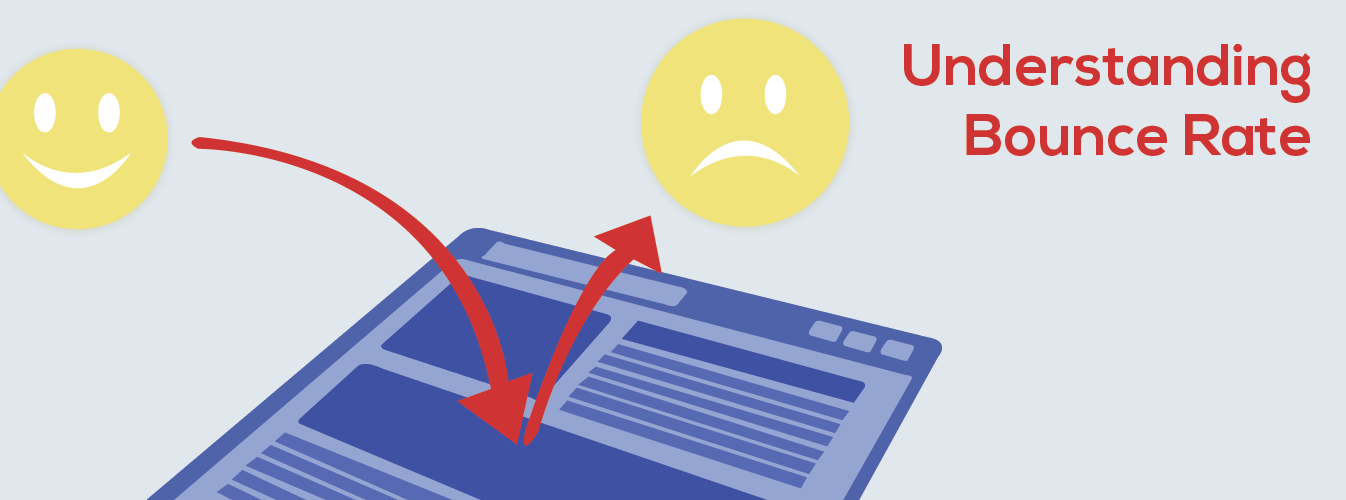Reducing Your Website's Bounce Rate

There's a lot of words that thrown around when it comes to analyzing your website. One of the most straight-forward metrics is the bounce rate. Bounce Rate is a percentage of the times a person who is visiting your website leaves without interacting with the page. It would be the equivalent of walking into a Chipotle, seeing that there's STILL no carnitas, and walking out, without taking any action.
A visitor can "bounce" from your site in many different ways: by selecting a link to a page on a different site, clicking the "back" button in the web browser to leave your site, closing an open window or tab, typing in a new URL, or experiencing a session timeout.
It's a given that some of your website visitors will bounce, often due to their own error. However, it's a big red flag when more people are leaving your site than staying and looking around. Generally, a bounce rate of less than 50% is considered acceptable.
While there's always room for improvement, a bounce rate in the 60% range or higher must be addressed. Occasionally, all it takes is changing the color of a button or adding a callout, but it's rarely that easy. Consider the following tips for reducing bounce rate on your site:
Make sure your website works in all the major browsers.
We often discuss the importance of cross-browser compatibility and having your website perform consistently within the major browsers (Firefox, Internet Explorer, Safari, and Google Chrome), and it hasn't changed. If anything, it's gotten more complex with the addition of responsive and mobile design. A high bounce rate among users on mobile devices may be an indication that your website is not functioning as it should and needs to be fixed.
Improve your website's load time.
Most internet users will not tolerate long load times, especially if they are on a mobile device. Shorten your load time, even if it's not presently affecting your bounce rate, by optimizing images and limiting the use of multimedia (video) on your landing pages.

Create an enjoyable user experience.
This should be a given by now. Does your website provide excellent content? Does the navigation make sense? Do you have a clear call-to-action? If not, poor user experience could be contributing to your bounce rate. The information that your visitors want should be easily accessible and your site's navigation should be intuitive. You should also consider removing pop-up ads and auto-play music or video, as they can have a negative effect on bounce rate as well.

Feature a search function prominently on your site.
If your website consists of more than five pages and you don't already have a search box, place one in a location where it can easily be found. The data from these searches will also provide insight to your audience - knowing what visitors are searching for allows you to start building content to fill in holes on your site.
Make sure that your external links open in a new tab.
You don't need to get carried away with offsite links, but the links you do include should open in a new window, so that the user does not unintentionally leave your site before they are ready. This happens more often than you may think.
Keep your keywords up-to-date.
Visitors that navigate to your site from search engines come to your page expecting results that are relevant to their search (or your PPC campaign). The site traffic generated from buying highly-searched keywords or misleading advertisements is ultimately useless if visitors are not engaging with your site. Improve the quality of traffic to your site by utilizing keywords that target your specific audience and are relevant to your location, products, or services.
If you think your site may be suffering from bounce rate issues, or you simply wish to improve your ROI, our experienced Web Analytics Specialists can help.
Contact 360 PSG today using the form below, or give us a call at 716-829-7373!


